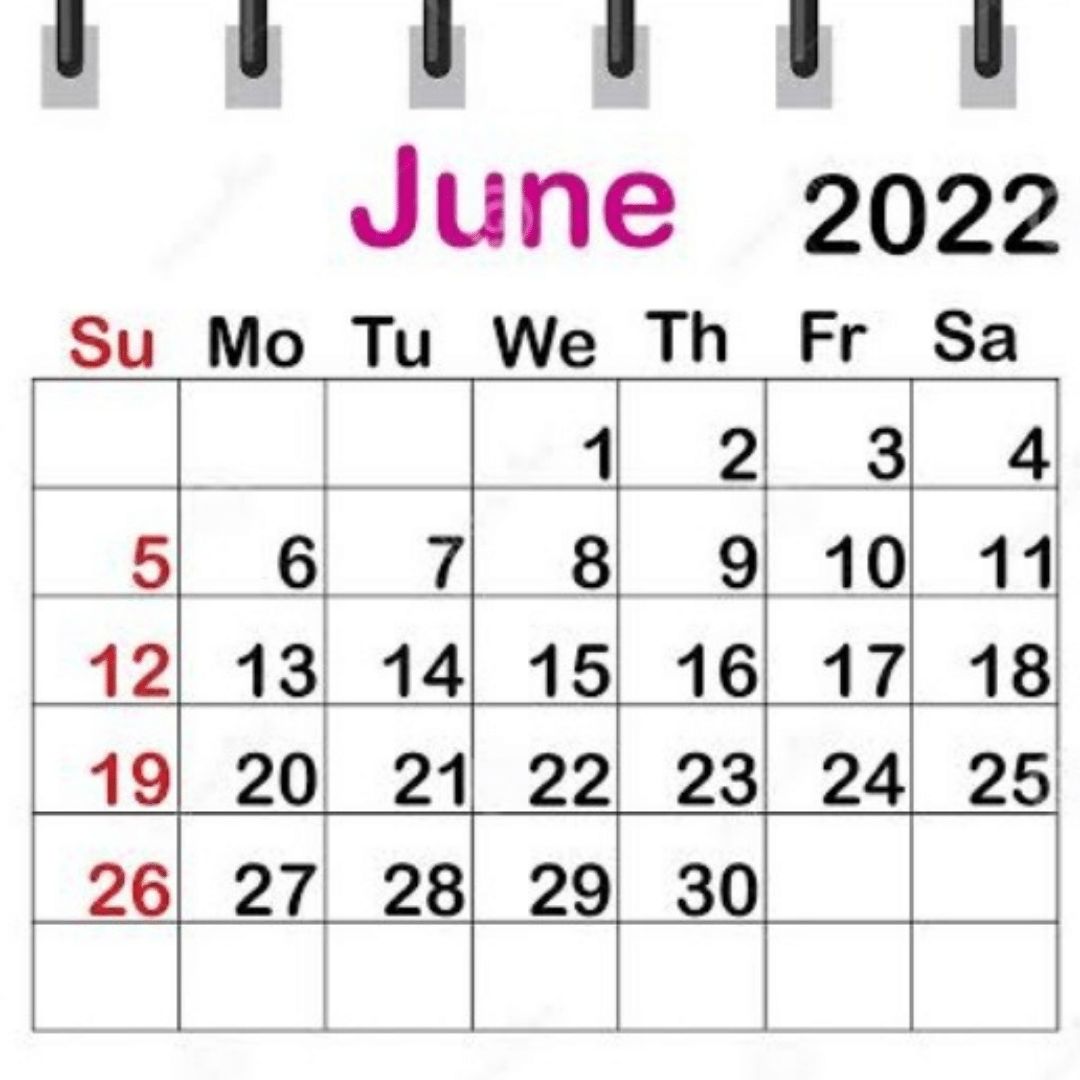June 2022 Calendar Maths Worksheet for Kids
FAQs on June 2022 Calendar Maths Worksheet for Kids
1. What fundamental maths skills can a child learn from a calendar worksheet?
A calendar worksheet is an excellent tool for teaching several foundational maths skills. Children can practice:
- Number Recognition and Sequencing: Identifying numbers from 1 to 31 and understanding their order.
- Counting: Tallying the number of days, weeks, or specific days like holidays or weekends.
- Pattern Recognition: Observing the repeating seven-day cycle of weeks.
- Basic Addition: Calculating future dates, for example, by adding 7 days to find the same day in the next week.
2. How many days are in the month of June?
The month of June consistently has 30 days. Learning the number of days in each month is a key part of understanding the calendar system as per the primary school syllabus.
3. How does using a calendar worksheet help a child understand concepts like 'before' and 'after'?
A calendar provides a clear visual grid that makes abstract time concepts concrete. By looking at the layout, a child can easily see that Tuesday comes after Monday or that the 14th comes before the 15th. Worksheets often include exercises that ask what day or date comes before or after another, reinforcing this crucial sequencing skill.
4. Why is understanding a calendar important for a child's daily life?
Understanding the calendar connects the abstract concept of time to a child's real-world experiences. It helps them build a sense of structure by anticipating events like school days, weekends, holidays, and birthdays. This practical knowledge helps them understand their weekly schedule and makes the passage of time more predictable and meaningful.
5. What are the seven days of the week in the correct order?
The seven days of the week, in their standard sequence, are Sunday, Monday, Tuesday, Wednesday, Thursday, Friday, and Saturday. A calendar visually reinforces this order repeatedly, helping children memorise it correctly.
6. How can you find all the Sundays in a month using a calendar?
To find all the Sundays in a month, you simply need to look at the column labelled 'Sunday' on the calendar grid. All the numbers listed in that specific column represent the dates that fall on a Sunday for that month. This is a practical exercise in reading data from a table.
7. Beyond the weekly cycle, what other mathematical patterns can be found on a calendar?
A calendar is rich with numerical patterns. A key pattern is that any number in a column is seven more than the number directly above it. For example, if the 3rd of the month is a Wednesday, the next Wednesday will be the 10th (3 + 7). This visualises repeated addition and the concept of multiples of seven.























